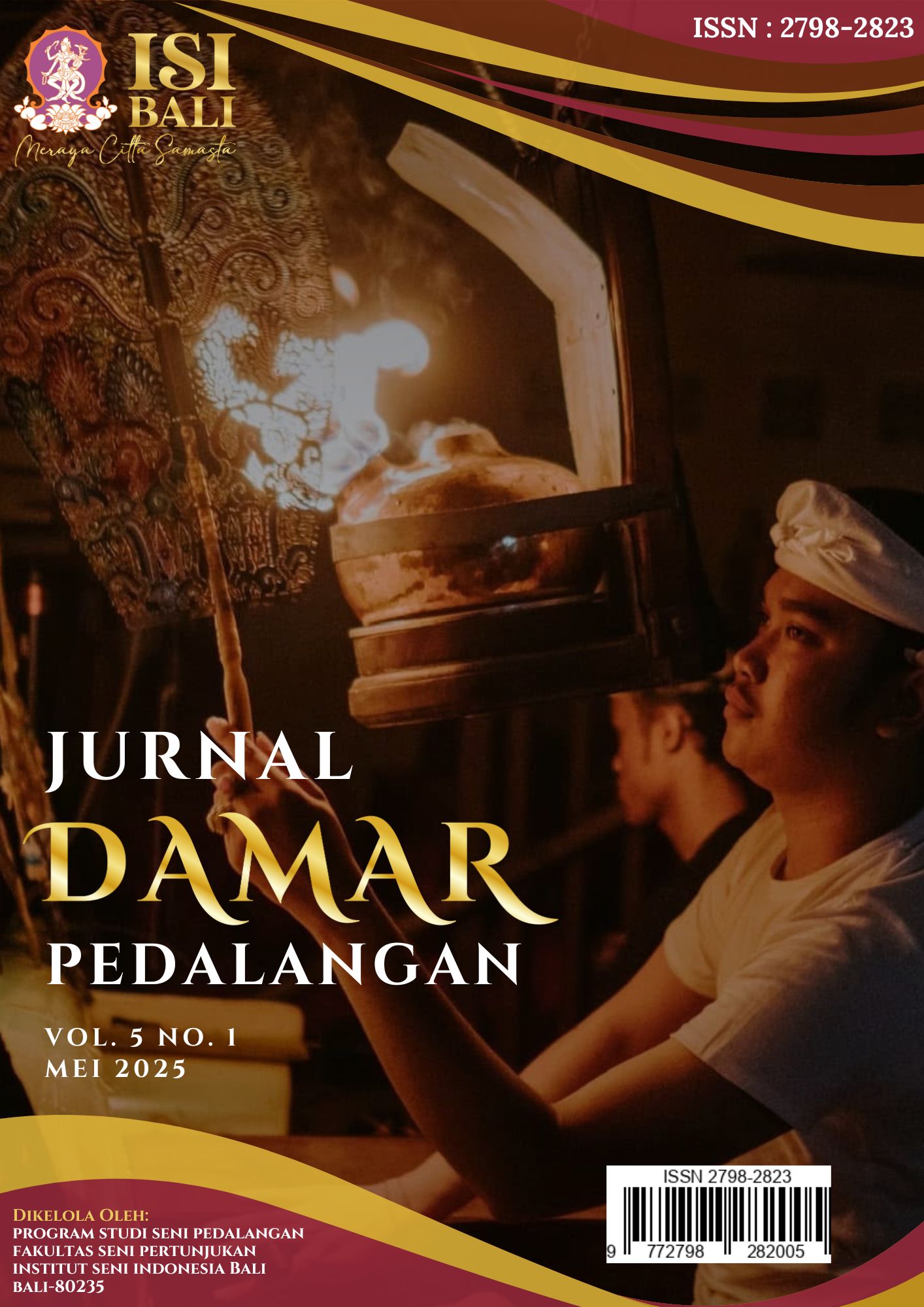TEATER WAYANG FIGURATIF PASUNG JIWA
DOI:
https://doi.org/10.59997/dmr.v5i1.4916Keywords:
Puppet Theatre, Figuratif Puppet, Performing Art, Pasung JiwaAbstract
Figurative wayang is an innovation in performing arts that combines traditional elements with modern approaches to create a unique and original art form. This work introduces a new perspective in wayang art through the exploration of three-dimensional movement techniques, individual performance systems, and visual aesthetics that blend traditional and contemporary elements. The wayang puppets are designed in a surrealistic style, depicting human figures with distortion, deformation, and stylization to create a profound aesthetic effect. The creative process in crafting figurative wayang involves the development of movement techniques using specialized rods, creating the illusion of suspended puppets moving naturally. The one-puppet-one-puppeteer system provides freedom for dynamic and expressive movement exploration. Costume and accessory designs adapted from everyday life enhance the social and cultural relevance of the work, making it not only entertaining but also a reflection of life. This work also integrates elements of theater, dance, and shadow mapping projection to create an immersive aesthetic experience. These techniques strengthen the narrative and evoke a deep dramatic atmosphere, effectively conveying moral messages and life values in an inspiring way. With its innovative approach and integration of diverse artistic elements, figurative wayang becomes a form of performing art that not only preserves tradition but also offers relevant updates in line with contemporary developments. This work is expected to inspire artists to continue evolving wayang art as a dynamic and living cultural heritage.
Downloads
References
Darma Putra, I Gusti Made. (2018), Wayang Ental 3 Dimensi
(2022), Disertasi Teater Tanpa Tepi : Refleksi Pengembaraan Diri
Edy M, Tri. (2010). Mari Belajar: Seni Rupa. Jakarta: Pusat Kurikulum dan Perbukuan Kementrian Pendidikan Nasional
Kawaguchi, Toshikazu. (2022), Feniculi Fenicula 2 : Kisah – Kisah Yang Baru Terungkap.
Liye,Tere. (2023), Tentang Kamu. Depok: Sabak Grip Nusantara.
(2023), Yang Telah Lama Pergi. Depok: Sabak Grip Nusantara
Mulyono, Sri. (1978), “Wayang: Asal-usul, Filsafat, dan Masa Depannya”, Jakarta: Penerbit Gunung Agung.
Murtiyoso, Bambang. (1983), Pengetahuan pedalangan, Surakarta: Sub Proyek Pengembangan ASKI.
Permas, achsan, dkk, (2003), Manajemen Organisasi Seni Pertunjukan, Jakarta:
Penerbit PPM.
Ramadani, Zaka Putra. (2021), Gesture Mengungkap Makna Di Balik Bahasa Tubuh Orang Lain Dari Mikroekspresi & Makroeskpresi, Klaten: Jendela Penerbit
Srinatih, I Gusti Ayu. (2018), Selat Segara. Denpasar: Balimangsi Fondation
Sumardjo, Jakob. (2000), Buku Filsafat Seni, Penerbit ITB Bandung
Suteja, I Kt. (2018), Catur Asrama Pendakian Spiritual Masyarakat Bali dalam Sebuah Karya Seni Tari. Surabaya: Paramitha
Syarifudin, Ahmad. (2022), Nilai Filosofis pada Unsur Pewayangan dan Reflesinya dalam Kehidupan.
Tedjoworo, H. (2001), Imaji dan Imajinasi. Suatu Telaah Filsafat Postmodern. Yogyakarta: Kanisius
Downloads
Published
Issue
Section
License
Copyright (c) 2025 I Gede Githa Premma Adhitya, Ni Komang Sekar Marhaeni, I Gusti Made Darma Putra

This work is licensed under a Creative Commons Attribution 4.0 International License.


